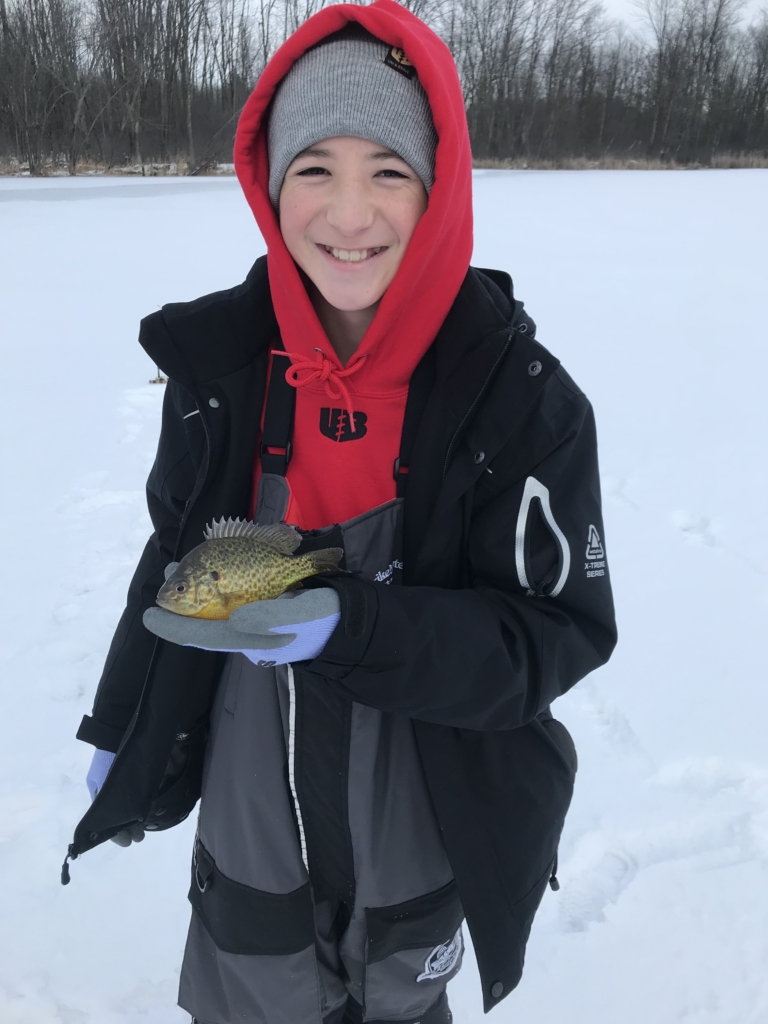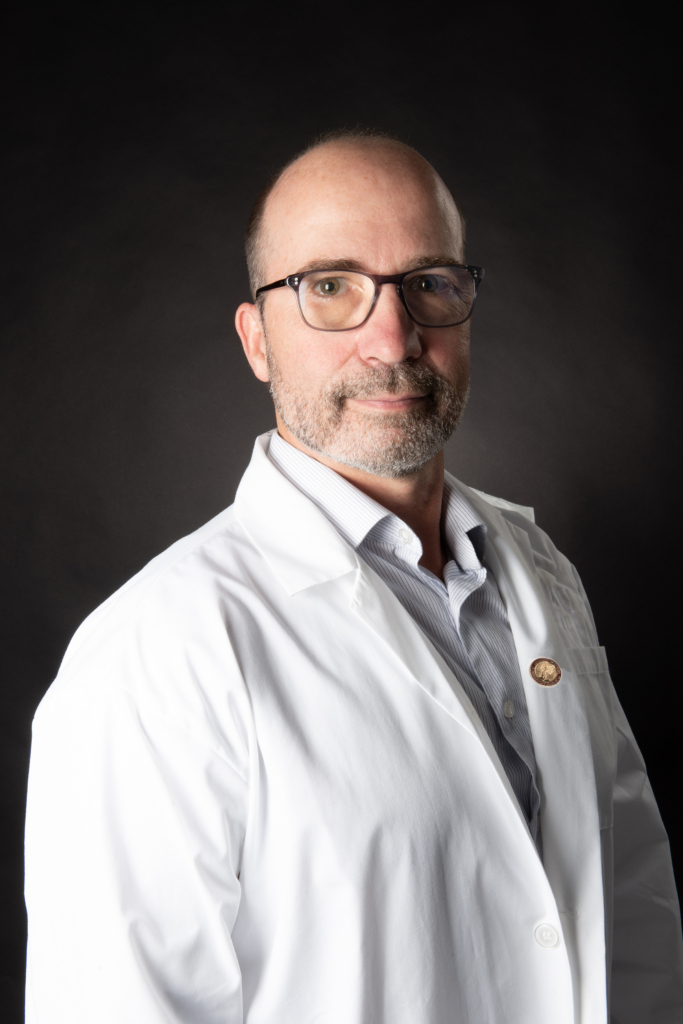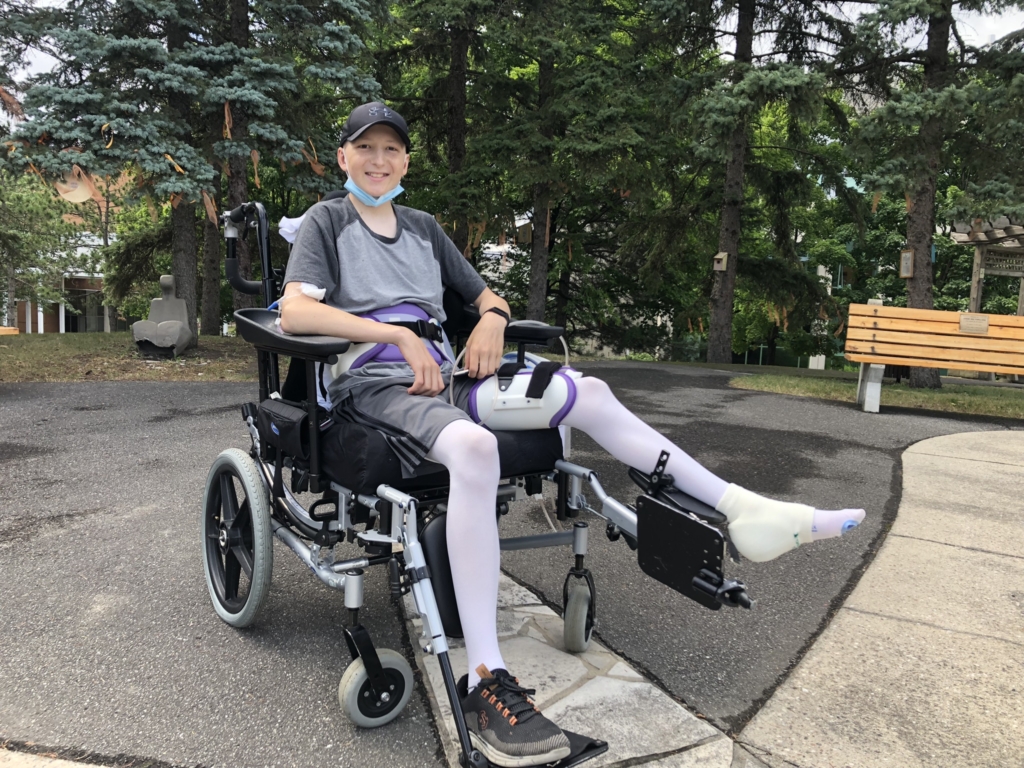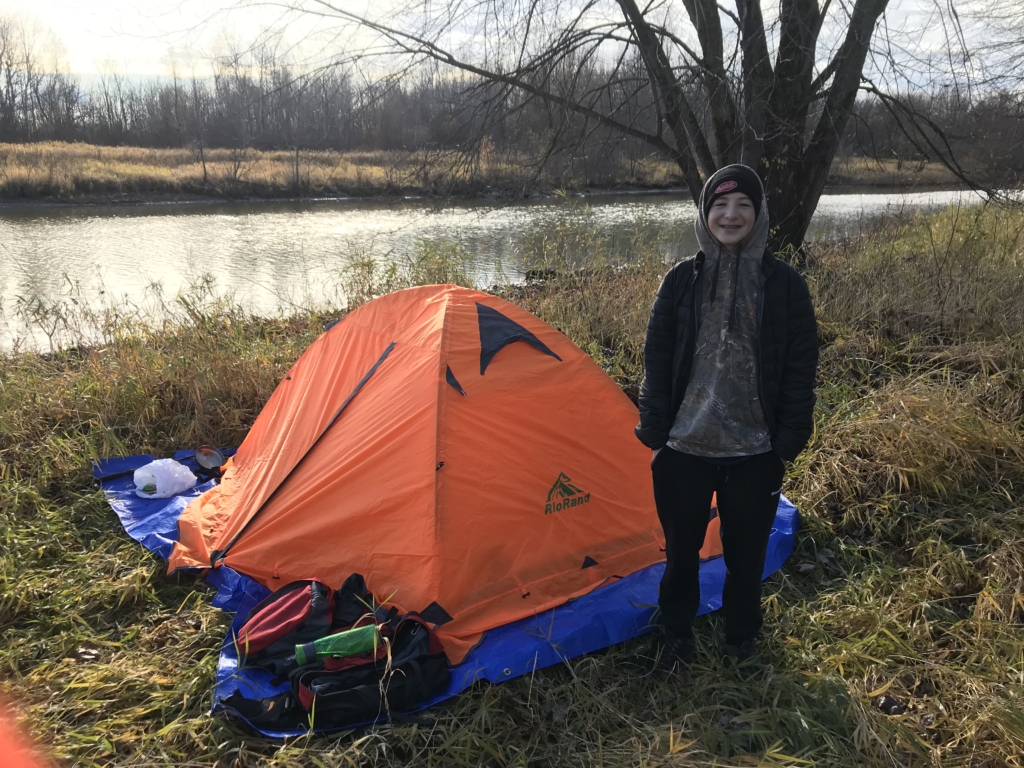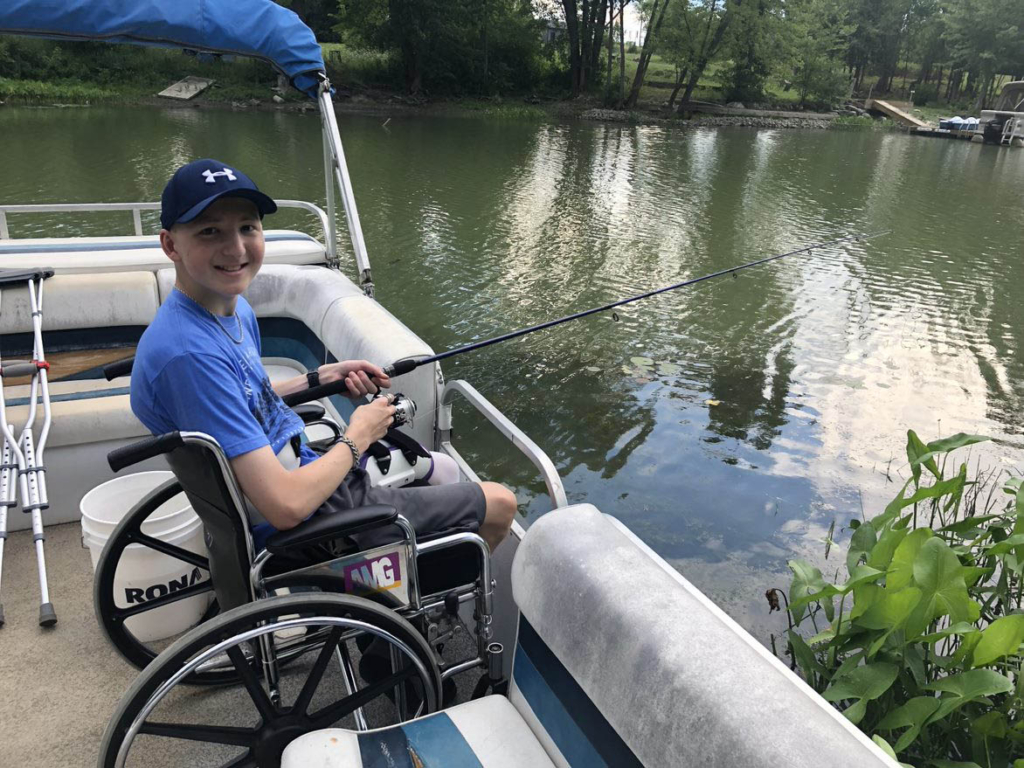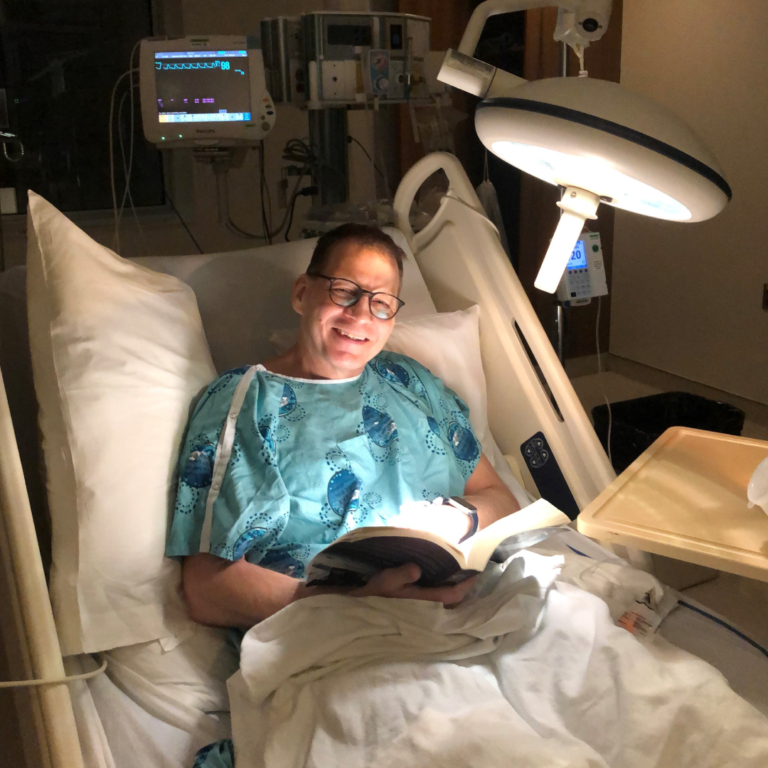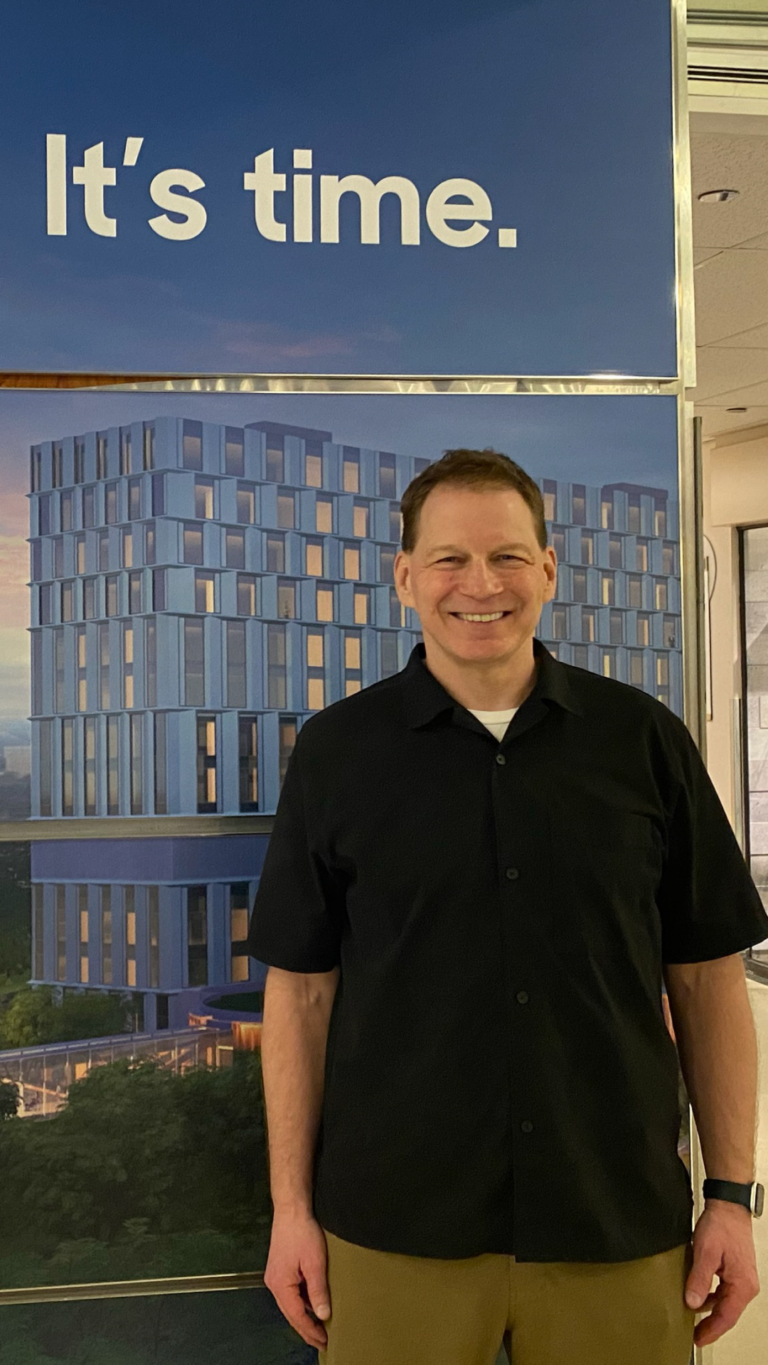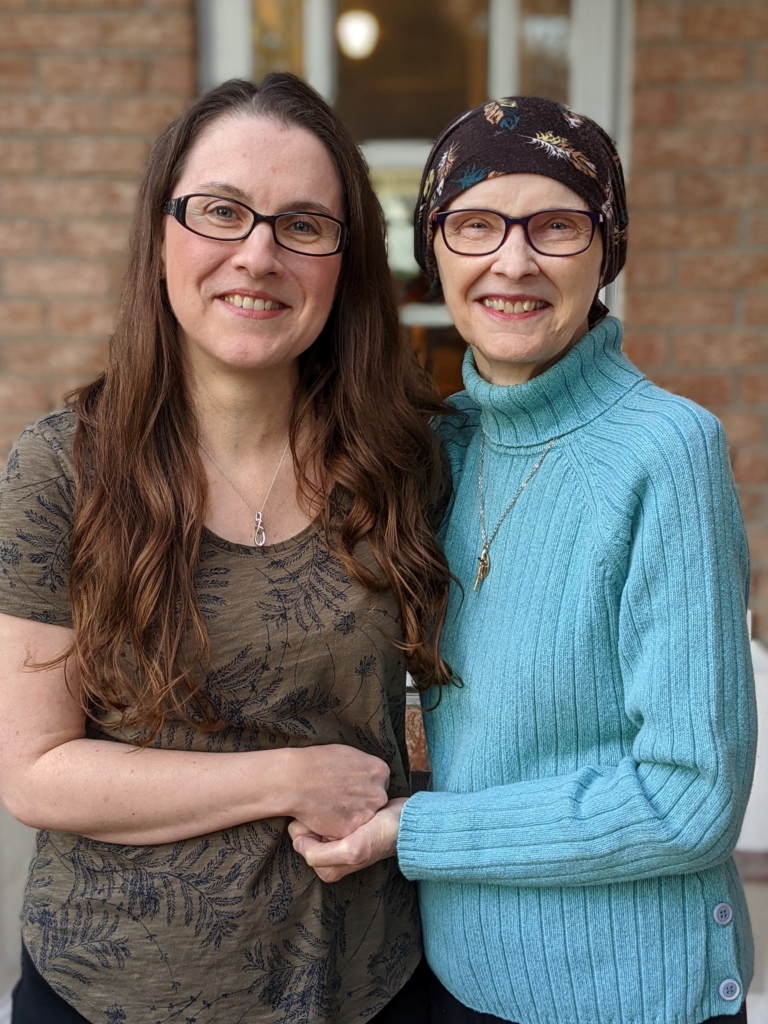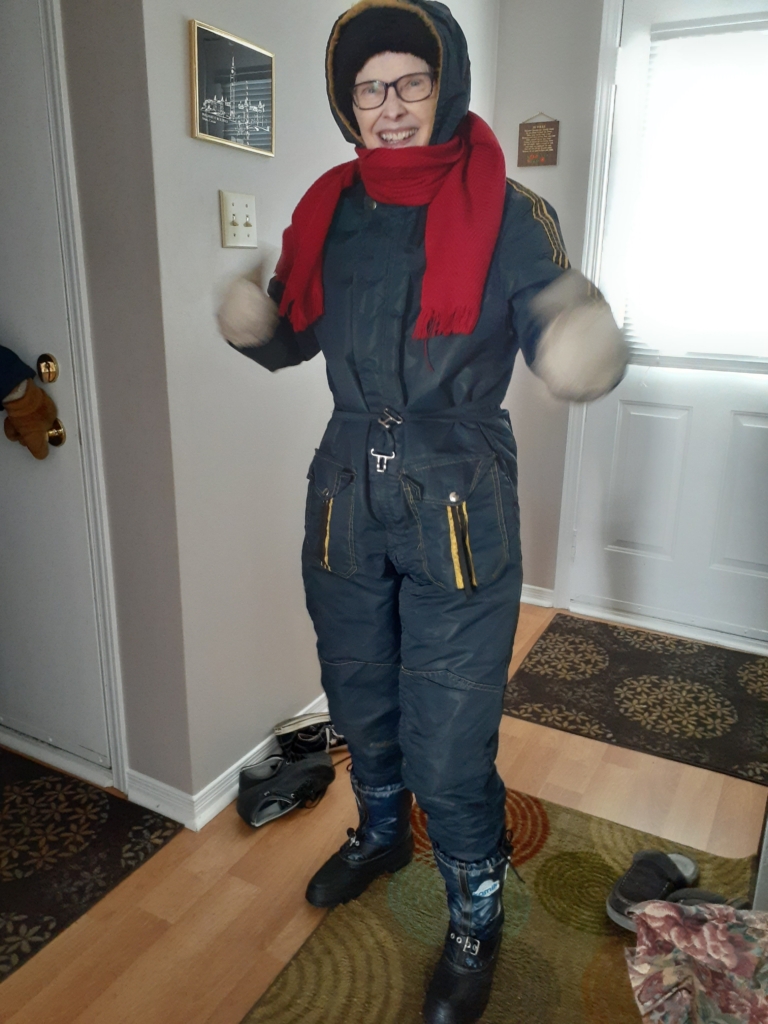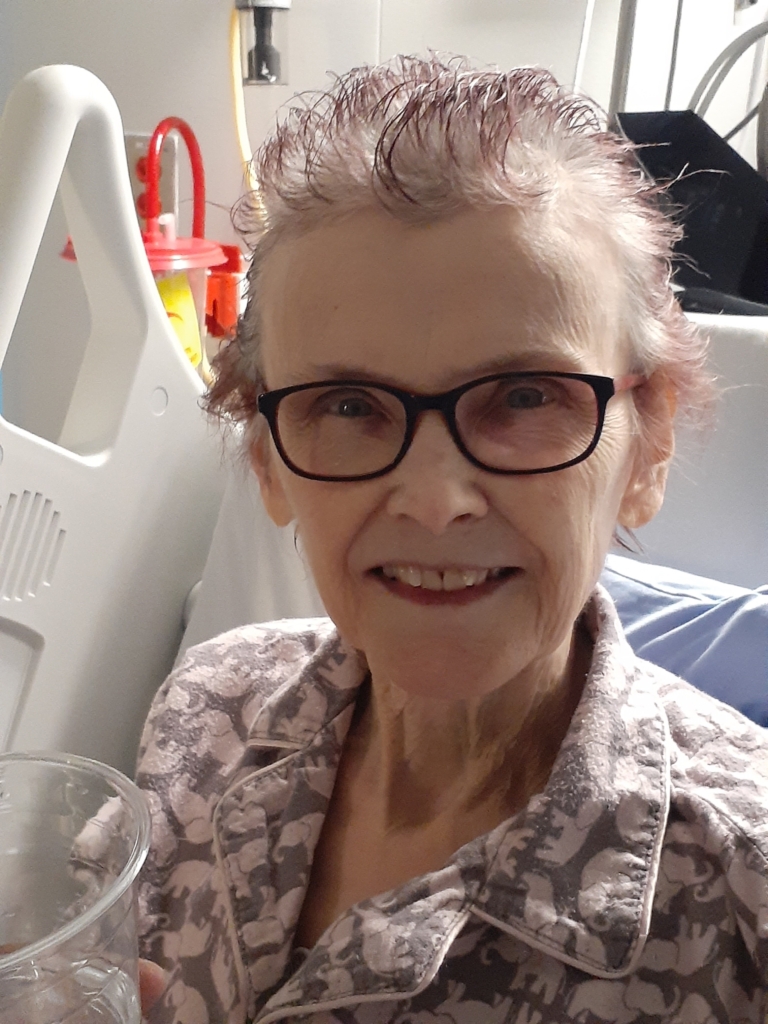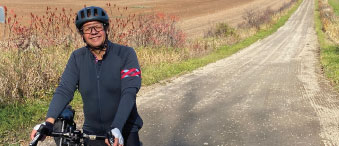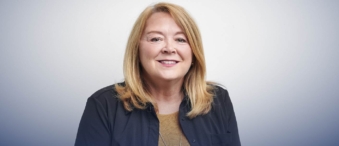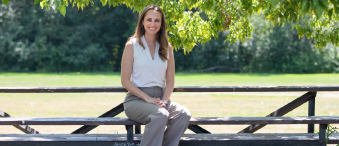Category: Creating Tomorrow
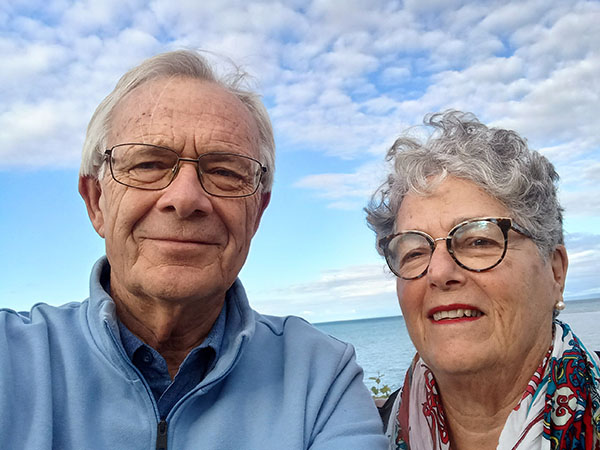
Published: March 2024
Agnès Jaouich and her husband Rémy strongly believe in the power of giving back. Their journey of supporting The Ottawa Hospital began two decades ago, when Rémy was a hospital pharmacist in the region and Agnès was appointed as vice-chair of the first Ottawa Hospital Board. In that role, she saw firsthand the dedication of the staff, the challenges they faced, and their unwavering commitment to their patients.
“It was obvious that there was a need for funding to support the healthcare of the community,” says Agnès, “so we became monthly donors, and are now supporting The Campaign to Create Tomorrow.”
Their dedication became deeply personal when, in 2021, Rémy was diagnosed with colon cancer. Dr. Robin Boushey’s team at The Ottawa Hospital started working immediately. The results after surgery were encouraging, and thankfully, no further treatment was needed.
But their journey wasn’t over.
“As soon as the diagnosis was made, Nurse Kelly tapped Rémy’s shoulder and said, ‘Welcome to the family.’…She understood the effect of this news and wanted Rémy to know that they would take care of him.”
— Agnès Jaouich
A year later, Rémy faced another battle, this time with bladder cancer. At the Urology Clinic, Dr. Jeffrey Warren identified the tumor. “As soon as the diagnosis was made,” Agnès recounts, “Nurse Kelly tapped Rémy’s shoulder and said, ‘Welcome to the family.’ She knew that Rémy would have many visits. She understood the effect of this news and wanted Rémy to know that they would take care of him.”
They were referred to Dr. Scott Morgan and Dr. Christina Canil, who developed and led Rémy’s radiation and chemotherapy treatments with expertise and optimism, offering hope in the face of adversity.
“The difference between my parents’ cancer treatments and Rémy’s was like night and day. One can see how important research and innovation are for treating cancer and how donations can make an impact.”
— Agnès Jaouich
“Through this process, every member of the team was there for him,” Agnès recalls. “Whether responding to his questions or his discomfort during treatments, they always had a positive and encouraging approach.”
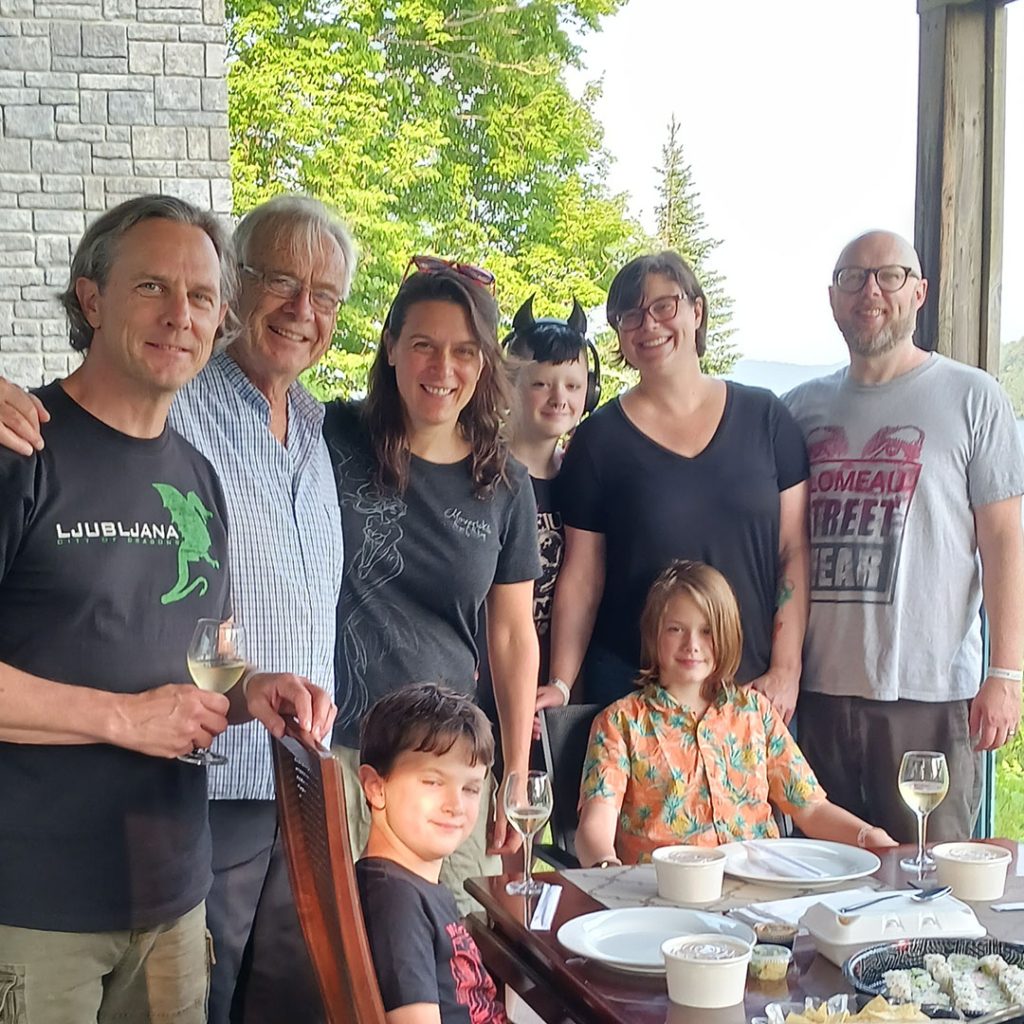
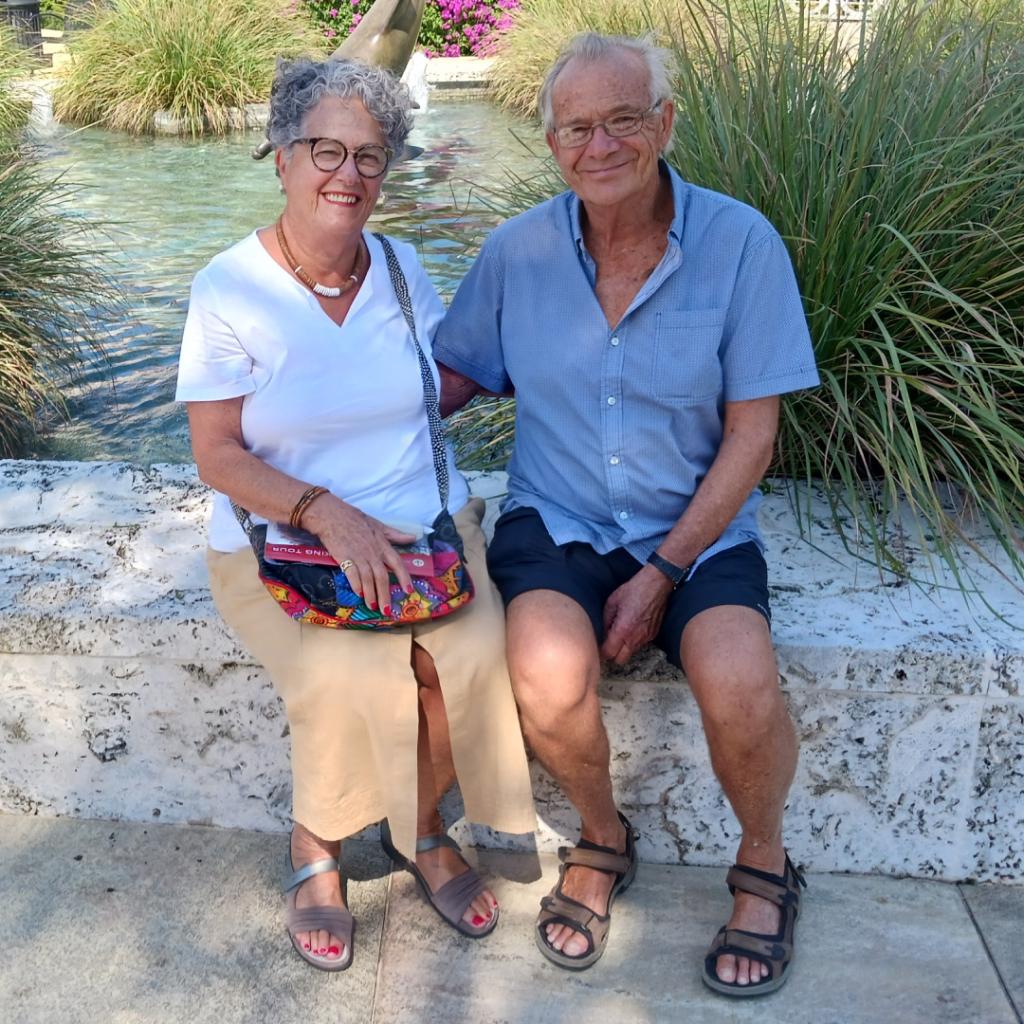
The experience also reinforced her feelings about the importance of research at The Ottawa Hospital. “I lost both of my parents to cancer, and they both passed away at a young age. The difference between my parents’ cancer treatments and Rémy’s was like night and day. One can see how important research and innovation are for treating cancer and how donations can make an impact.”
As Rémy’s last visit to the hospital yielded no signs of cancer, Agnès and Rémy found themselves embracing life with renewed vigor. “After the treatments, he has gone back to a normal way of life,” Agnès shares.
For them, The Campaign to Create Tomorrow isn’t just about bricks and mortar; it is about creating a future where every patient receives the care and compassion they deserve.
Thanks to our monthly donors, like Agnès and Rémy, we continue to see breakthroughs in research and care that once seemed unachievable become the healthcare we count on today.
Hand-in-hand with building their business, Myers and the Mews family are building communities
You don’t have to go further than your own street, maybe even your own driveway, to find some connection in this city to Myers Automotive Group. After all, they’ve been putting people in the driver’s seat for the better part of a century. But, as their website attests, they are so much more than that — the people on their team are our friends and neighbours, and the company is an integral part of our community.
“Without community support, we wouldn’t be where we are today.”
— Harry Mews
While Gordon Myers founded the company in 1942, it was Hank Mews who took over in 1972, building the business while he and his family also helped build this community.
“Our dad just felt that this was where they had made their home and grown the business. And without community support, we wouldn’t be where we are today,” says Harry Mews, who, along with his brother Rob Mews, now runs the business. They have driven its growth and are prepped to open their 17th dealership this spring.
The Mews story has roots that are both rich in history and philanthropy. It starts with a poorly executed layup on a basketball court in Newfoundland when a young Hank Mews fell into the lap of an adoring fan whom he vowed he would marry. And he did. Phyllis and Hank would celebrate 61 years together, until Hank’s passing in 2022. They made Ottawa their home and, together, they built a successful business and a family as committed to this community as you could find.
“All businesses rely on the community for their success. And this is just a means of giving back.”
— Rob Mews
Rob says it’s an honour for them to make donations.
“I think it’s important for all businesses to help as much as they can, whether it’s donating money or donating time. You know, all businesses rely on the community for their success. And this is just a means of giving back.”
And this generosity has not gone unnoticed. In fact, Myers Automotive Group was recently recognized at the 2023 AFP Philanthropy Awards for Outstanding Corporate Philanthropist. This will come as no surprise to the thousands of athletes who have sported the Myers logo or to the food banks and community centres have benefited from the Mews family generosity. They truly are a driving force in our community.
But nowhere has their mission been more directed and their commitment more profound than with healthcare. In 2015, the Queensway-Carleton Hospital received $1 million from the Myers Automotive Group towards the Acute Care of the Elderly Unit. In 2022, five years after Hank Mews underwent valve replacement surgery, the University of Ottawa Heart Institute received $1 million from the Myers Automotive Group. And now, The Ottawa Hospital has received $2.5 million towards The Campaign to Create Tomorrow. This is the company’s largest philanthropic gift to date.
“At the end of the day, if the community can’t support something like this, well, we’re not going to have it.”
— Harry Mews
“We felt that it was important to support the effort because health is everything. We’ve seen that directly in our family,” says Harry Mews. “Our hospitals, our healthcare system, we’re so lucky to have the system we have in Canada, and it’s important that everybody recognizes that. At the end of the day, if the community can’t support something like this, well, we’re not going to have it.”
It’s a source of pride for the Mews brothers — and the entire the Myers Group — that they support the very community that has supported them over the decades. While Hank Mews may not have perfected his basketball layup, it’s clear he succeeded in instilling valuable life lessons to those close to him, that, whether it’s a million dollars or a few dollars, the act of giving on an ongoing basis is what will carry our community forward.
A CANCER JOURNEY
Nurse Sabrina Presta’s very different perspective of life as a patient
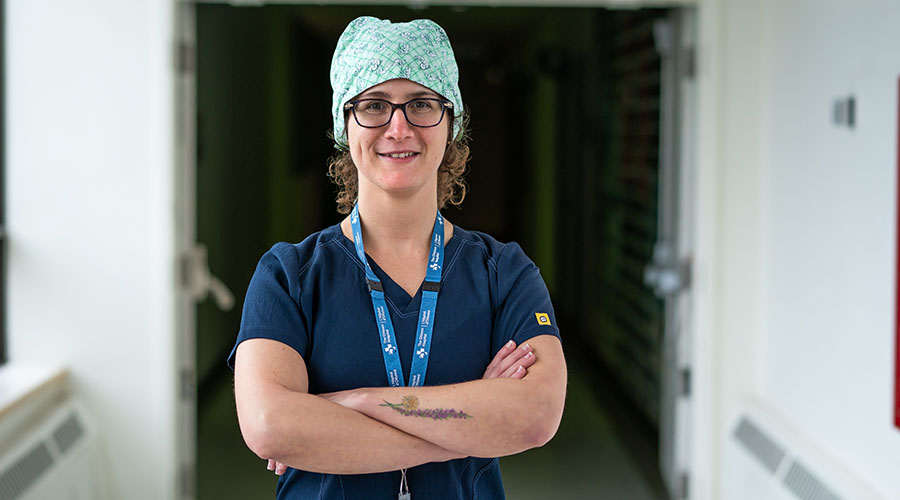
Published: February 2024
For more than 15 years, Sabrina Presta has been a registered nurse at The Ottawa Hospital. Her home unit is B2, the General Surgery department at the Civic Campus — during the pandemic, B2 became the designated Covid unit for a year. Her team on B2 is close-knit and sticks together not only when it comes to providing compassionate care to patients but also in supporting each other.
In 2020, Sabrina needed that support more than ever. “I was experiencing some mental health challenges, like anxiety. Then, by the end of that year, I was diagnosed with thyroid cancer — that came out of nowhere,” explains Sabrina.
It was the summer of 2020, when Sabrina started getting strep throat regularly — something that she never experienced before. Then she noticed a lump on her neck, and she remembers being afraid of what it might be. She immediately reached out to her doctor.
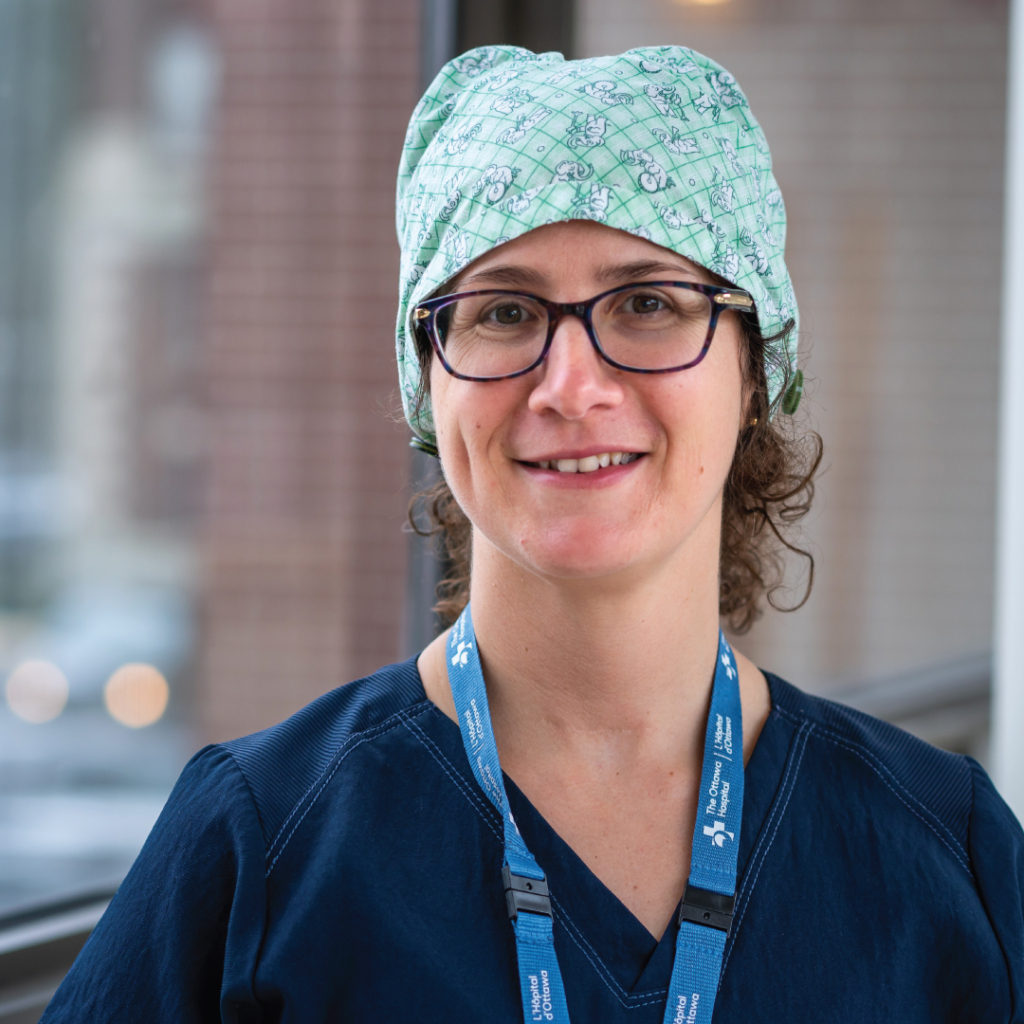
“The nurse so deeply ingrained in me wanted to read the biopsy report right away. But my intuition guided me wisely, and I decided to wait to meet my doctor face to face.”
— Sabrina Presta
Her doctor ordered an ultrasound, followed by a biopsy. “I had access to MyChart at the time and remember getting a notification that the results were available. The nurse so deeply ingrained in me wanted to read the biopsy report right away. But my intuition guided me wisely, and I decided to wait to meet my doctor face to face. I didn’t want my anxiety to creep up on me and potentially misinterpret the results,” explains Sabrina.
It was December 15, 2020, when she learned the results — the tumours were malignant — it was papillary thyroid cancer. This is the most common type of thyroid cancer and generally impacts people between 30 and 50 years old and appears more often in women. Thankfully, most papillary thyroid cancers respond well to treatment.
“It was during the pandemic, and I was alone when I got the news. I went to my car, and I just started shaking. I was trembling like a leaf. I called a friend, and I was crying on the phone, then I drove home. When I saw my husband, he looked at my eyes and he knew,” says Sabrina.
It was a shock because this active mom of two daughters had no other symptoms, other than the sore throat and lump on her neck. The good news was that it was a non-aggressive, slow-growing form of cancer. It would, however, require a total thyroidectomy — the complete removal of her thyroid gland because there were two cancerous nodules, one in each lobe.
Her daughters were old enough — nine and seven at the time — that Sabrina and her husband sat them down to break the news. “My eldest daughter was surprised to hear the word cancer because I didn’t seem sick. She was sad at first, then was reassured when she heard us talk about the treatment, including surgery. The hardest part for her was watching her little sister’s reaction. She quickly took on the big sister role and comforted her sister,” explains Sabrina. “Meanwhile, my youngest cried ‘Are we still going to have Christmas?’ Her world was just rattled in that moment when she heard cancer. Her great-grandmother died of cancer, and so she thought cancer meant mommy’s going to die.”
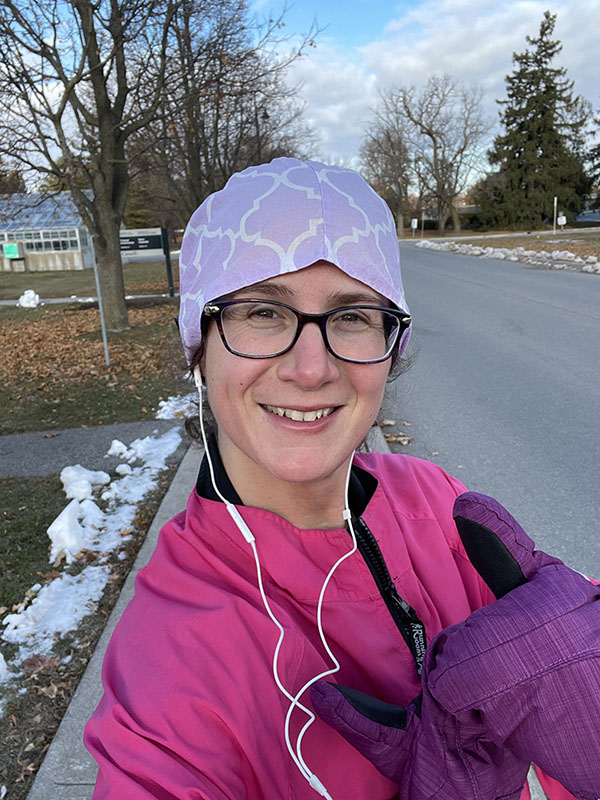
She assured her daughters she would be well taken care of, and the surgery would make her better.
In Eastern Ontario, the General Campus of The Ottawa Hospital is home to the region’s Cancer Centre — it is the hub and supports satellite centres from Barry’s Bay to Hawkesbury to Cornwall. The Irving Greenberg Family Cancer Centre, located at the Queensway Carleton Hospital, is also a part of our cancer program. Thanks to state-of-the-art technology and world-leading clinical trials, we can provide a wide-range of care for patients across Eastern Ontario and Nunavut.
As a resident of Limoges, Sabrina was grateful to be able to have her surgery at the Winchester and District Memorial Hospital — a community partner with our hospital — in February 2021. The surgery went well, and the next day, she was sent home to continue her recovery. But days after the surgery, Sabrina developed symptoms that made her nervous, and she went straight to the Emergency Department (ED) at the Civic Campus.
“I was home and had just woken up. I walked to the bathroom and almost fainted — everything went black. I started to have tingling sensations and numbness in my legs, arms, and face,” remembers Sabrina. “After my surgery, I was given discharge instructions from my nurse. Those were two signs to look out for in the post-operative phase, as my body was adjusting to life without a thyroid gland. I woke up my husband, and he drove me to the ED right away.”
“It was an act of kindness that went a long way for me. It taught me that you can really leave a lasting impression on someone’s life experience.”
— Sabrina Presta
Now Sabrina found herself as a patient, in her own hospital, and something “magical” happened. She was waiting to be seen when a respiratory therapist she works with saw her. “He took a few moments out of his busy shift to come over to me. His kindness gave me the opportunity I needed to be comforted and to cry. My tears flowed as I was feeling overwhelmed, tired, and scared of my current reality,” explains Sabrina. “He stayed right there with me. I was very weak, and he helped guide me to the bathroom. Before he left, he gave me tea and crackers. It was an act of kindness that went a long way for me. It taught me that you can really leave a lasting impression on someone’s life experience. He was present. This respiratory therapist gave me that gift.”
As a nurse who diligently practices her profession with compassion, being on the receiving end was eye-opening. “When I was a patient, this word became the hope I needed.”
Sabrina soon received good news — what she was experiencing was normal after her type of surgery, and she was able to go home. Within six weeks, she was back at work with a different outlook as a nurse. She was inspired to create her own wellness initiative for her B2 team called B2 Steps Ahead with Sabrina — a collaboration to help colleagues with their mental health. “I created a special room on our unit, the Rest Room, where colleagues can go and recharge in a quiet space during their shift. It even has twinkling lights to relax.”

Her experience with cancer has taught her to slow down and take care of herself holistically. When she is not working on the frontlines, you will probably find her outside either running, walking, practicing yoga, or writing. A dear colleague even gave her the nickname, “Mother Nature.” “I just love being outside! The fresh air gives me something ineffable,” smiles Sabrina.
Today, she can look back on her cancer journey with gratitude. “It is a privilege to work as a registered nurse in facility that gives me a sense of fulfilment.”
The Ottawa Hospital is a leading academic health, research, and learning hospital proudly affiliated with the University of Ottawa.
A CANCER JOURNEY
Music leads Caleb Fagen through his journey with Hodgkin’s lymphoma
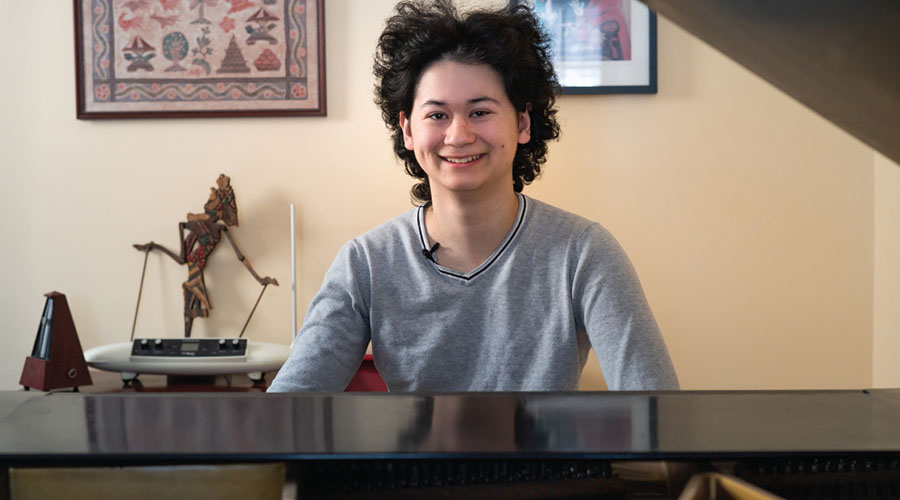
Published: February 2024
Music is huge a part of Caleb Fagen’s life — you could say he lives and breathes it. When the university student started to feel rundown in the summer of 2021, he thought he had been pushing himself too hard. Soon though, he was diagnosed with Hodgkin’s lymphoma. It was shocking news for this young man and his loved ones.
“I was completely unprepared when I heard the diagnosis. I was shocked.”
— Caleb Fagen
Earlier that year, Caleb was attending uOttawa for his undergrad in music, he was teaching private music lessons and was a part of the school’s choir — something that brought him great joy.
“I was very focused on school. It was the hardest year of my undergrad, especially with the pandemic. I practiced three to four hours a day on the piano — I was working hard,” explains Caleb.
In addition to feeling rundown, he had also become anxious and depressed, and he wasn’t eating well.
“I was completely unprepared when I heard the diagnosis. I was shocked. I was so focused on school and music that all I wanted to know was how I was going to be able to practice, and how was school going to work?” remembers Caleb. “I didn’t want to lose the momentum that I gained.”
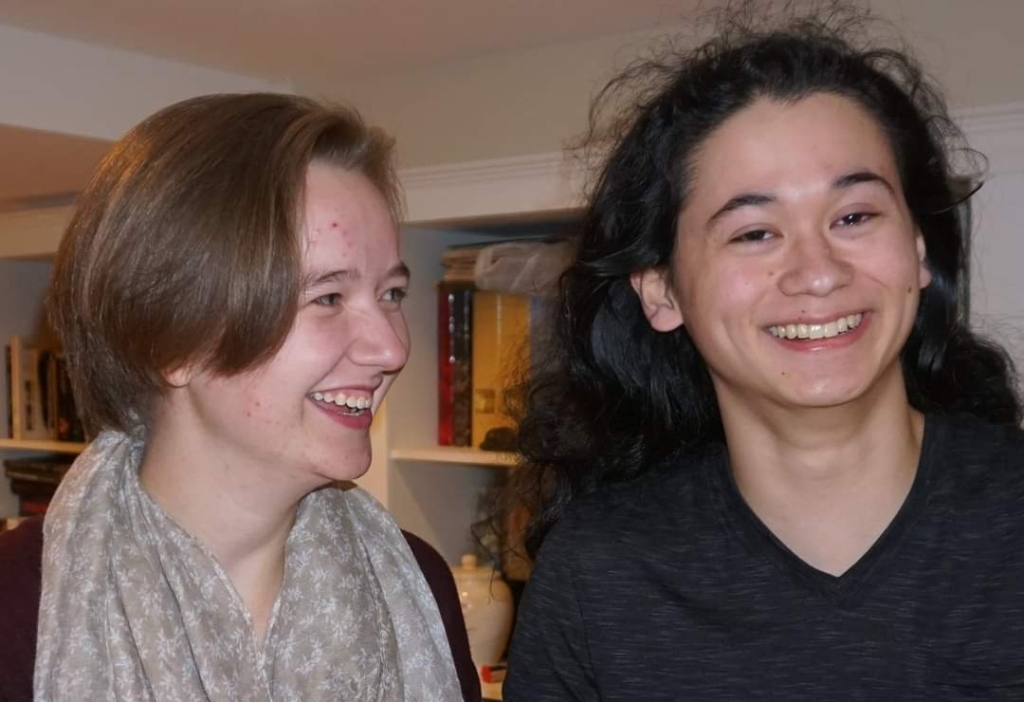
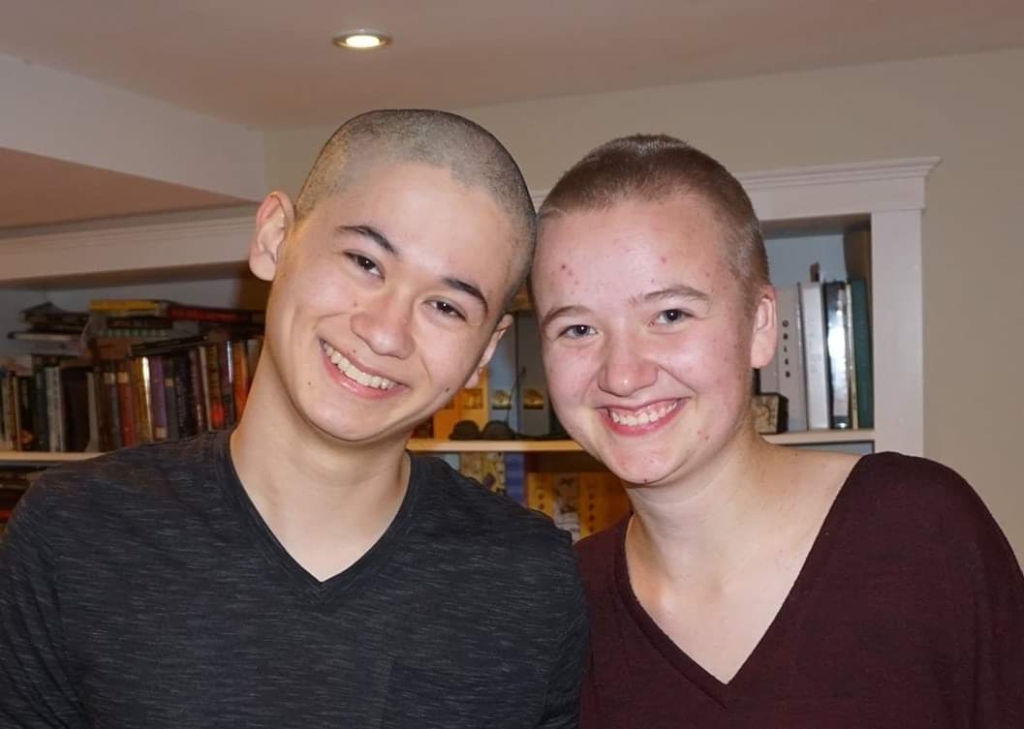
Shocking diagnosis of Hodgkin’s lymphoma
Hodgkin’s lymphoma begins in a patient’s lymphatic system — that’s part of the body’s germ-fighting immune system. The white blood cells grow abnormally and can form growths (tumours) throughout the body.
Once Caleb digested the news, there was acceptance. He credits a great deal of that to his incredible support system, including his parents, his brother, and his partner, Jane.
“My dad came to all my chemo treatments and took time off work to be there with me, and mom was a huge support. My partner lived with me through a lot of this too, it really helped, and it brought a lot more love to this scary situation.”
The first course of action was chemotherapy, and those treatments went from October to the end of March 2022. Caleb maintained some online courses during this period, and overall, he got through the treatment fairly well. That spring he travelled to Italy, resumed working, and even thought about plans to finish his degree.
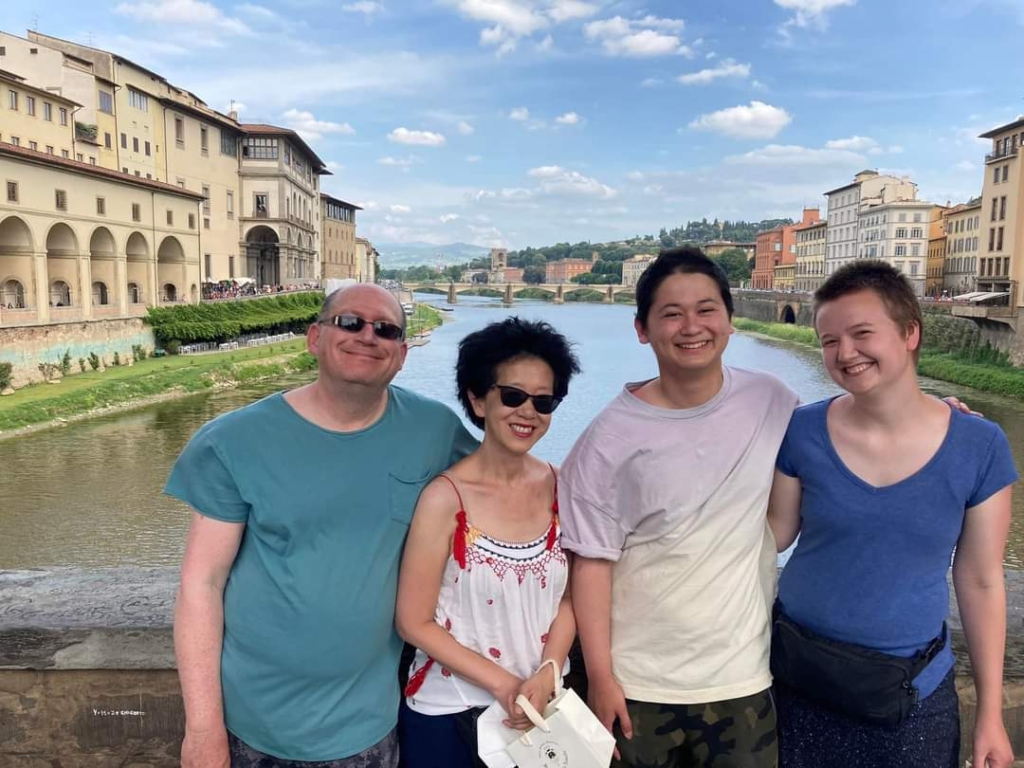
A stem-cell transplant the next level of defence
By late summer of 2022, just one year after his initial diagnosis, a PET scan showed the disease was refractory. That means while it appeared Caleb initially responded to treatment, the cancer had returned.
The next step was a stem-cell transplant — a process that began in September. “It was quite an ordeal. I went through a few rounds of chemo, and then the stem cell collection. That was followed by the harsh conditioning chemo treatment to wipe my system clean. I felt like a walking zombie. I was very feeble,” explains Caleb.
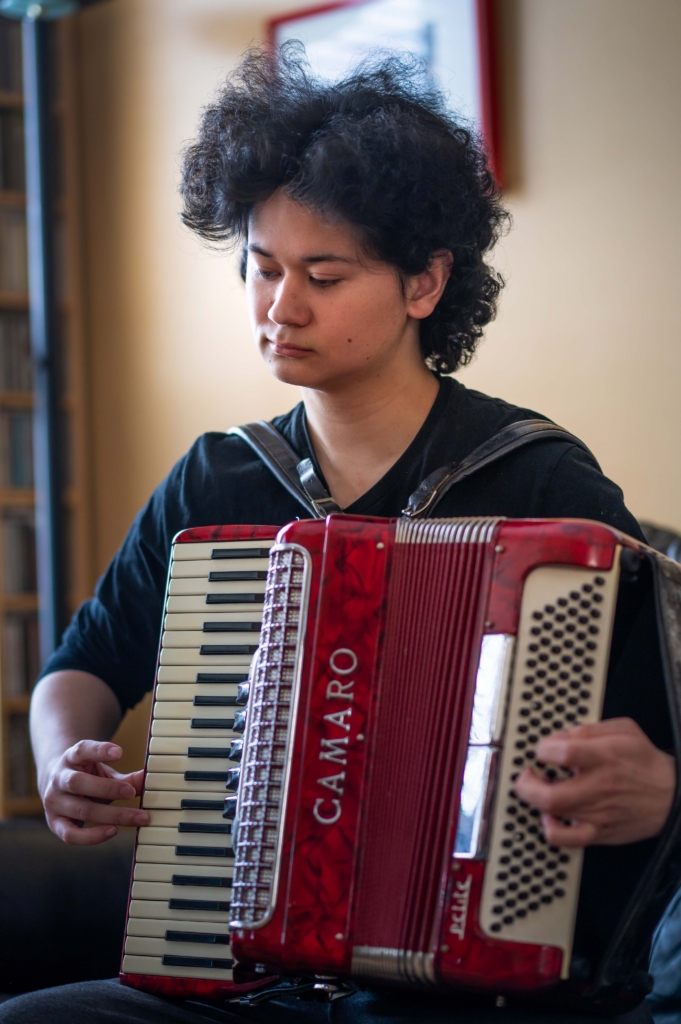
“The team was really good. There was a time when I had to be an inpatient and I was treated well. They told me it would be difficult post-transplant, but it would get better.”
— Caleb Fagen
It was Halloween when he received his stem-cell transplant. He credits his care team at The Ottawa Hospital for helping him through a very difficult period. “The team was really good. There was a time when I had to be an inpatient and I was treated well. They told me it would be difficult post-transplant, but it would get better.”
Caleb describes the following month as the worst of his life. “There were times in November when I lost my sense of taste. My tongue felt like it was a rock, it felt stiff and hard, and my appetite wasn’t good. That was just one example,” remembers Caleb. “It was a traumatizing time. I had a psychologist and support to help me work through things and to focus on breathing and to stay calm.”
Cancer and the mental health journey
The Cancer Centre’s psycho-social oncology program was established to provide patients like Caleb the support needed to help cope with the many challenges associated with cancer and its treatment.
One person who was an integral part of helping Caleb during this challenging time was social worker Izabela Uscinowicz Valdivia. “Isabela was terrific. I was with her since before my transplant. She was there during the really bad times. We developed a great relationship,” says Caleb.
He also credits his hematologists Dr. Manika Gupta, who started this journey with him, and Dr. David Macdonald, who currently cares for him.
Gradually, things started to improve for Caleb, but he admits it was a slow process. By December, he was regaining strength both mentally and physically, and he sat down to play again. “That was a great moment when I was able to start playing the piano. I missed it.”
Looking to the future
Because of the high risk of relapse, Caleb started a new chemo treatment in December, which occurred every three weeks and only ended on October 27, 2023. It was then that Caleb was able to ring the bell at the Cancer Centre to mark the end of his treatment.
Today, he’s back at school in-person part-time, with two more courses left to get his degree. He’s also writing music for himself and teaching again.
“Physically I feel a lot better. I want to start exercising more to build up my strength, but I’m in a better place. I’m still dealing with mental health issues. I have a counsellor, but I have fewer things to say, so that’s good,” Caleb says with a smile.
Now 23, Caleb’s recent scan showed he’s in remission, however, he continues to be monitored closely with an ultrasound and then another PET scan coming in the next six months. In the meantime, he’s making plans. He hopes to travel to Portugal in 2024, and long term, he wants to continue sharing his love of music with others by opening his own music school — a dream he hopes to see become a reality one day.
The Ottawa Hospital is a leading academic health, research, and learning hospital proudly affiliated with the University of Ottawa.
A CANCER JOURNEY
Diagnosis of Hodgkin’s lymphoma stops Heba Haidar in her tracks
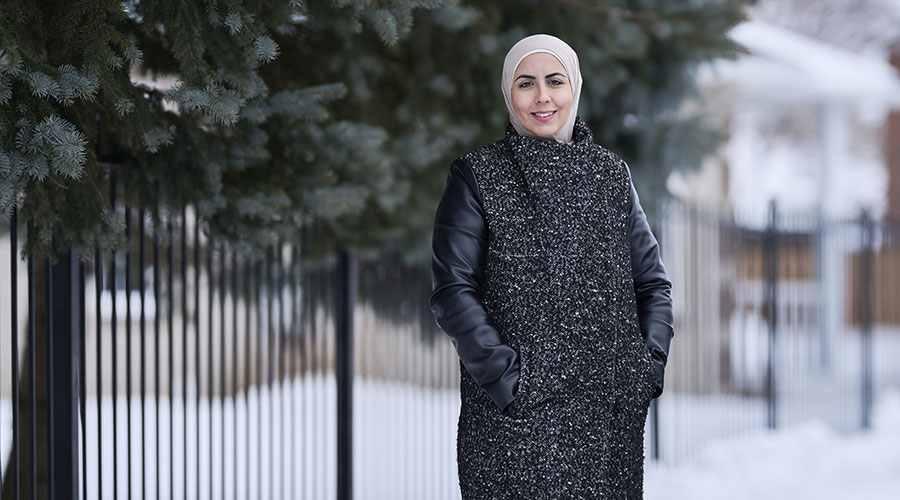
Published: February 2024
At age 33, and with three children under the age of five, Heba Haidar was making big plans in the spring of 2022. She and her husband were planning an eight-week trip back to Lebanon to see their family — it would be the first visit since before the pandemic. Two of her three children would meet their grandparents for the first time. But everything came to a grinding halt when Heba learned she had Hodgkin’s lymphoma.
The first red flag came when Heba noticed random swelling in her neck. Her doctor ordered an ultrasound, and the results were inconclusive. The swelling went away on its own. “My doctor suggested I see an ear, nose, and throat (ENT) specialist at The Ottawa Hospital,” explains Heba. “Not long after I got that referral, I noticed a lump in my neck below my collarbone, but I had no other symptoms.”
Five days before the family’s long-awaited trip, Heba met with the ENT specialist who ordered a biopsy. The results would be available in five to seven days — by that time, Heba and her family would be in Lebanon.
“I left it to fate. I decided we’d still go on the trip, but the day before we were supposed to leave, I got the call,” remembers Heba. “My ENT doctor gave me the news over the phone knowing I was leaving. The results showed a malignancy, but not enough to give me a diagnosis.”
Diagnosis of Hodgkin’s lymphoma flips world upside down
Suddenly, Heba’s life was flipped upside down. “There was panic. I was in complete shock.”
“There’s no road map to navigate this news. The first thing we did was unpack for our trip.”
— Heba Haidar
Then, with the trip cancelled, Heba was thrust into a series of appointments, including tests and scans to pinpoint the diagnosis. At the time, she was on maternity leave as manager of a medical clinic — she was nursing her nine-month-old and caring for her other two children who were four and five years old. They all relied on her 24/7.
Just two weeks after she was supposed to leave on her trip, Heba was diagnosed with Hodgkin’s lymphoma and referred to the hematology team at The Ottawa Hospital where next steps were discussed and the roadmap for treatment put in place.
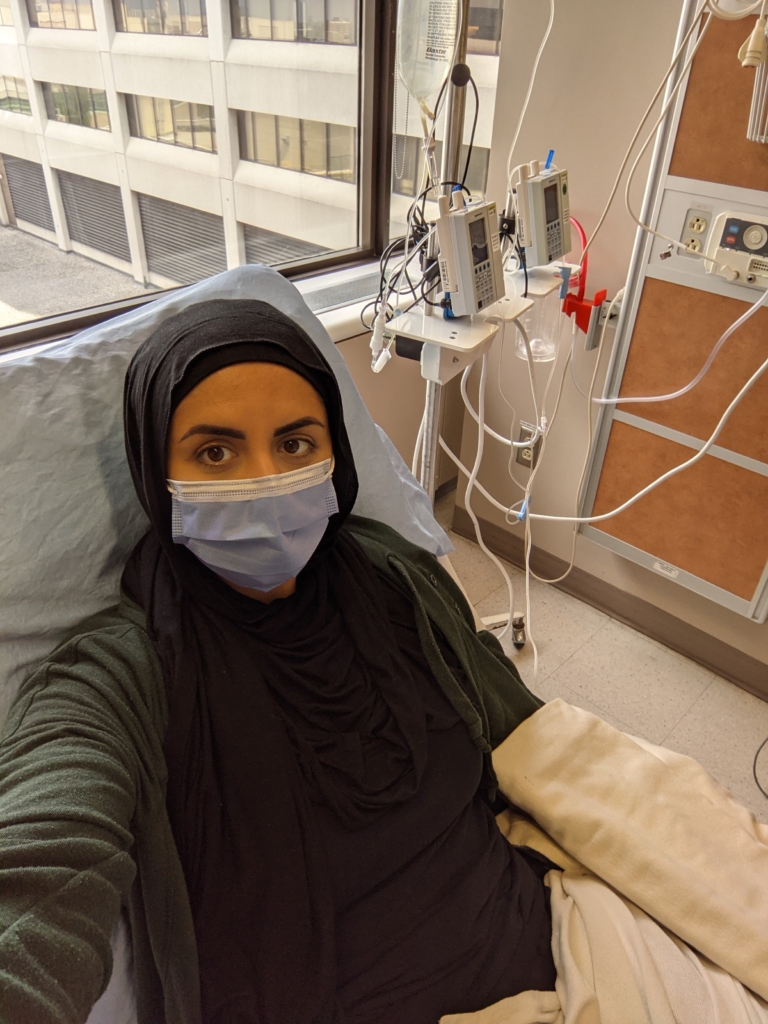
“That period from diagnosis to treatment plan is probably the worst period a patient can go through because everything is unknown, and your mind goes wild — wondering what’s going to happen,” says Heba.
Both Hodgkin’s lymphoma and non-Hodgkin’s lymphoma form in the white blood cells. Those cells are called lymphocytes, and they are an important part of the body’s germ-fighting immune system. The difference between the two can only be seen under a microscope and depends on whether a particular type of cell called Reed-Sternberg is detected. If it is, then the lymphoma is classified as Hodgkin’s. If it’s not, then it’s diagnosed non-Hodgkin’s lymphoma. Hodgkin’s lymphoma is generally diagnosed at an earlier stage.
Six months of chemotherapy with three young children at home
Since Heba’s cancer was stage 2, her hematologist, Dr. Melissa Toupin, started her on four to six months of chemotherapy starting in mid-June. A scan in early August 2022 showed she was in remission. However, Dr. Toupin recommended she continue with a full six months of chemo to give her the best possible chance to avoid a recurrence.
Heba described every round of chemo as a challenge. “Something that was just foreign to me two months ago was now a regular part of my life. It took me some time to come to terms with the extension of treatment, but knowing my scans were clear, it helped.”
She also turned to our psycho-social oncology program for support. She did several sessions to help with the mental side of the cancer treatment. Over the next few months, she stayed active by walking, weightlifting at home, and of course, being a mom didn’t stop.
Then on November 16, 2022, Heba rang the bell, signifying her final treatment. She described the moment as surreal and amazing. “It was kind of like a double-edged sword. There was relief, but then there was the whole realization of what I just went through,” remembers Heba. “I was in survival mode and then just like that, treatment was done. There was also that safety net when I was going to the hospital regularly. Now the safety net was removed. I worried about recurrence and what would happen to me.”
Desire to give back and support groundbreaking research
During her treatment, Heba was reflecting on the hospital’s care team that surrounded her, and she wanted to give back. She started a fundraiser with a goal of $10,000 to support cancer research at The Ottawa Hospital. “I wanted to raise awareness for the work The Ottawa Hospital is doing.”
“We have groundbreaking research right here in Canada, right here in Ottawa, and I wanted people to know about that.”
— Heba Haidar
Today, Heba is doing well and in a good place. That special trip back home finally happened in May 2023. In the midst of her treatment, it was hard to imagine the trip, but she remembers what a nurse said one day. “She said by next year, it will all feel like a bad dream.”
It also gave her a whole new perspective on life and the hospital. “At 33, I didn’t think about The Ottawa Hospital other than giving birth to my son. Even with my background in healthcare, my thoughts of the hospital were about having babies – happy thoughts. But now I think of the team and the compassionate people. They saved my life. They save lives and prolong lives.”
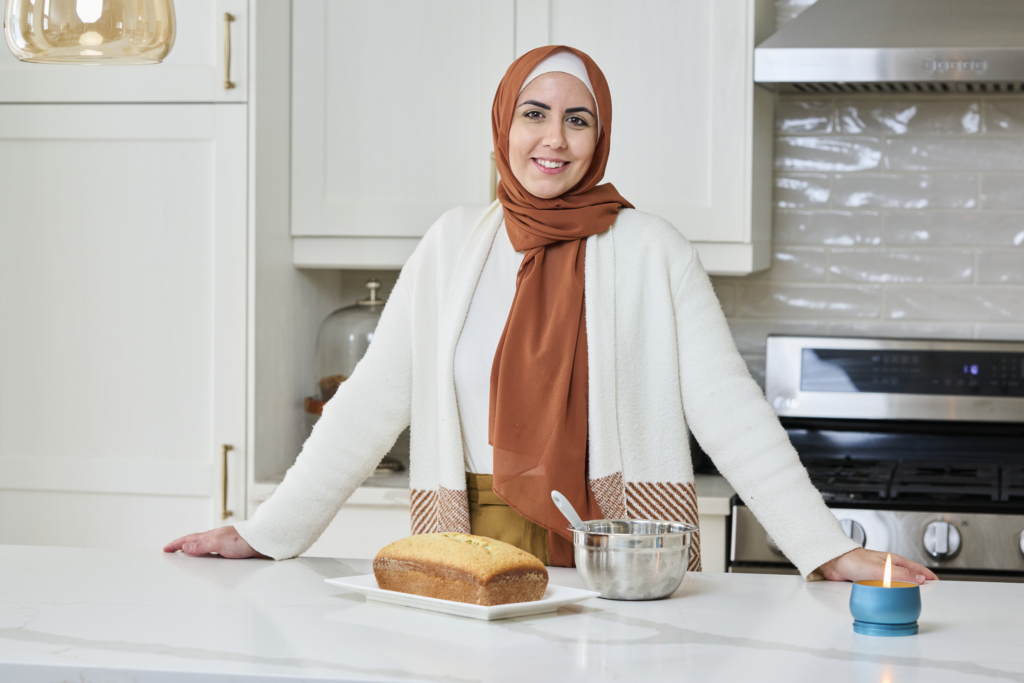
The Ottawa Hospital is a leading academic health, research, and learning hospital proudly affiliated with the University of Ottawa.
A CANCER JOURNEY
Randy McElligott’s unusual reaction to his cancer diagnosis
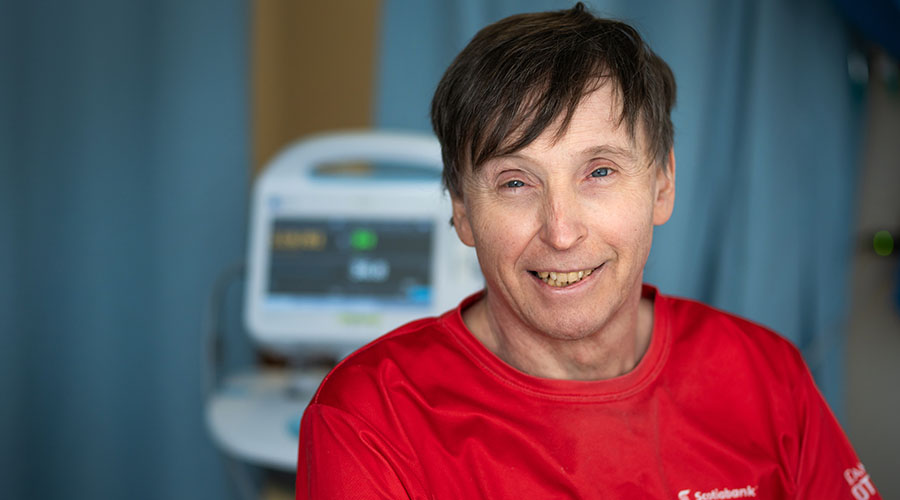
Update: Sadly, Randy passed away on June 24, 2025. We’re deeply grateful to Randy for sharing his story with us. He remained funny and positive to the very end, and he leaves behind a wonderful legacy.
Published: February 2024
When Randy McElligott heard the words “you have cancer”, he didn’t have the average reaction to this type of news. “I was happy. Most people don’t take that attitude, but I saw it as an opportunity to change my life,” explains Randy.
That’s exactly what he did. Randy decided to train for a marathon. He wanted to try something challenging, and he’s been moving ever since.
“I had what’s known as smoldering multiple myeloma. It sits there and doesn’t do anything. It’s like a volcano just waiting to erupt.”
— Randy McElligott
It was July 13, 2005, and Randy was 49 when he received the news — it was a surprise find. His family doctor had ticked off an extra box on the requisition form for his blood test. That mark resulted in the discovery of cancer — or what would become cancer. “I had what’s known as smoldering multiple myeloma. It sits there and doesn’t do anything. It’s like a volcano just waiting to erupt,” explains Randy.
Multiple myeloma is a cancer that starts in a type of white blood cell that’s known as a plasma cell. These cells help the body fight infection, and they can be found in the bone marrow, as well as other tissues and organs.
For nine years, he waited for the “eruption” but maintained his positive attitude. And over those years, he kept busy doing the things he loves, like hosting his jazz radio show, In Transition, on CHUO-FM — a program he’s been doing since 1988. But his greatest distraction has been running. Since his diagnosis, he has completed 12 marathons and about 80 half-marathons. “That kept me sane and kept me focused. By doing marathons, I was building up my mental ability to handle what was ahead for me regarding cancer.”
Becoming symptomatic for multiple myeloma
In 2014, Randy and his wife, Nicole, were in Barbados on vacation, and he became symptomatic. “I was in excruciating pain. I returned home and was hospitalized right away. The cancer had spread to my spine, chest, and sternum.”
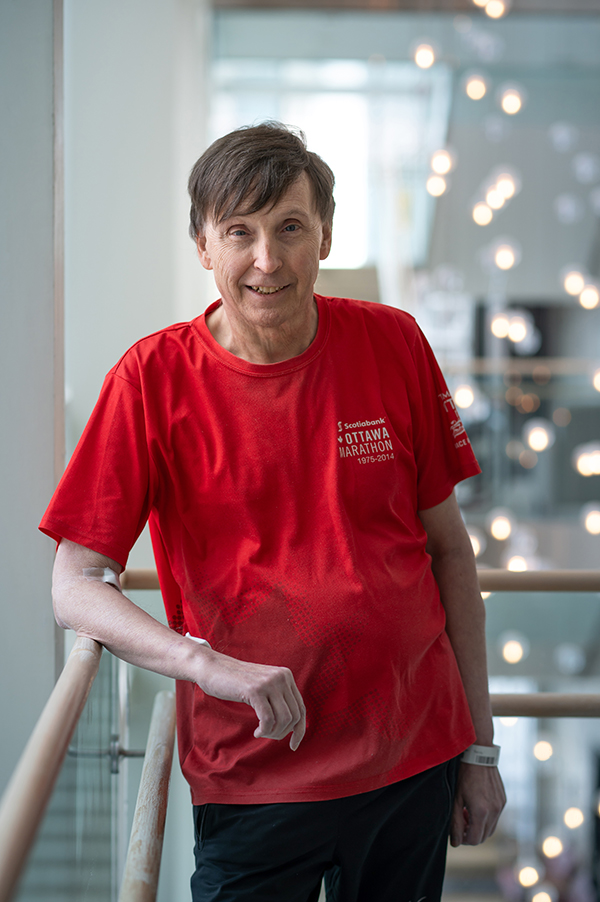
Once Randy was stabilized, he was discharged, and chemotherapy treatment began at the cancer outpatient at the General Campus of The Ottawa Hospital. He also forged on with his running.
The next big hurdle Randy faced was a bone marrow transplant in October 2015. But true to his character, seven weeks later he did a 10k run and then another marathon. “It’s all because of the cancer. I must prove, even if I have cancer, I don’t have to stop. I wanted to show other cancer patients they can keep going. Look at Sindy Hooper — she is incredible and one of the inspirations in my life to keep going and do these races,” explains Randy.
“I have a great cancer team. If any medical trials are coming up, they know I want to help.”
— Randy McElligott
This cancer journey has been a rollercoaster ride for Randy — he has been in and out of remission several times since his diagnosis almost 20 years ago. But his positive attitude is the one thing that never wavers.
He also credits the specialized team — which includes four hematologists — for always being ready when a new challenge presents itself. “I have a great cancer team. If any medical trials are coming up, they know I want to help.”
Access to clinical trials at The Ottawa Hospital
Access to clinical trials is key for patients like Randy, and thankfully, The Ottawa Hospital has one of the largest and strongest clinical trials programs in Canada. This gives patients access to even more novel therapies. And in addition to helping establish best practices for patient care around the world, clinical trials also provide new hope.
Through his own journey, Randy is doing what he can to help our scientists learn more. “I told my hematologist, Dr. Arleigh McCurdy, she can do anything. I’m your guinea pig. I’m on my second drug trial now. It’s a highly experimental drug and so far, it’s going well. The first trial, three or four years ago, was for another drug, and that worked for a while, but then I relapsed,” says Randy.
“It means the world to have access to this type of care. And if I can help other patients, what could be better?”
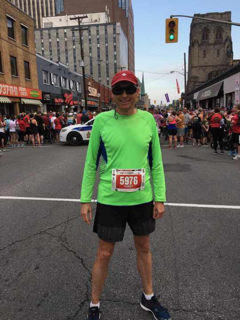
Maintaining a positive attitude
In the last few years, Randy faced new health challenges. In 2021, within only a few weeks, he lost 30 pounds. It was a bit of a mystery as to what was happening. “It was looking like this was the end of the road for me. I thought my time was running out, but I just said, ‘Cool.’ Hospice care was being planned, but then I started gaining weight again, and I completely rebounded,” explains Randy.
“I never get discouraged. I’m always joking around. It’s been an incredible journey.”
— Randy McElligott
Unfortunately, Randy then had new obstacles to overcome. The following year, he was on a trip to Montreal with his wife when he fell and broke a leg, wrist, and two ribs. Then in February of 2023, he broke the same leg, again. After surgery on that leg, he contracted a potentially life-threatening bacterial infection. He was treated in hospital for a month, and he had to learn to walk again.
These incidents may have taken the biggest toll on him, as they’ve prevented him from running. “I never get discouraged. I’m always joking around. It’s been an incredible journey.”
Today, thanks to the clinical trial he’s currently on, Randy is once again in remission. He hopes to start back on his spin bike to regain his strength so one day he might get back to running — his true love.
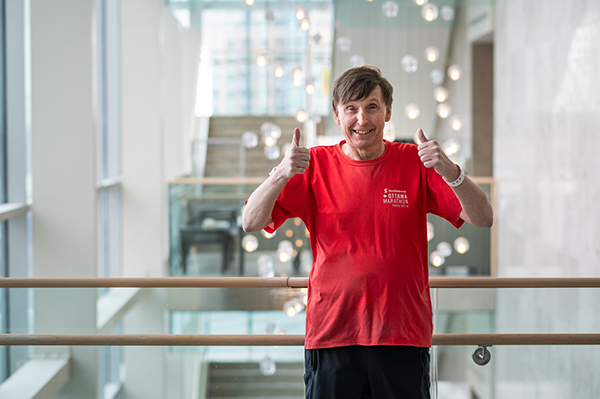
For now, he makes bi-weekly visits to the General Campus for his treatment. “It was initially every week, but now it’s every two weeks, and it only takes seconds to administer by needle. I think my team is surprised I’ve lasted this long after relapsing several times. But as of today, there’s no trace of the myeloma,” Randy smiles.
While fatigue is preventing him from being active, he continues to entertain radio listeners with his jazz favourites and looks forward to lacing up his running shoes once again.
“It’s really an incredible life.”
Update February 2025:
In December 2024, Randy was diagnosed with AML leukemia and he continues to receive care at our hospital.
The Ottawa Hospital is a leading academic health, research, and learning hospital proudly affiliated with the University of Ottawa.


